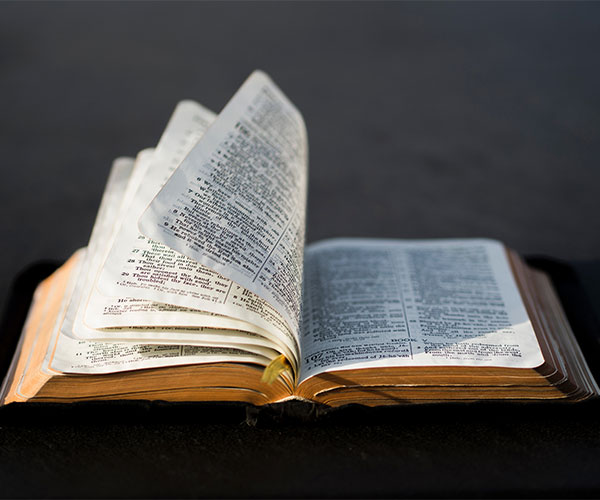
the Bible – God’s Word
II. OTHER EVIDENCE
C. Unity in the Bible
Even though the Bible was written over a 1500-year timespan, by over 40 different authors who came from every walk of life, it displays an amazing unity and continuity in its subject matter. Writing in the Old Testament, the prophet Moses was raised in the house of Pharaoh King of Egypt; Joshua, Moses successor was a military commander; David was a shepherd boy turned king; Amos the prophet was a herdsmen; Nehemiah was a cupbearer and Daniel was a prime minister.
In the New Testament Peter and John were fisherman; Matthew was a tax collector; Paul was a highly-trained Rabbi and Luke his companion was a doctor. Theses authors penned the biblical texts in different languages, from three different continents and from varied personal settings which include a palace, a tent and a prison!
Remarkably, amid this vast diversity there is an amazing unity and continuity which can be best explained by the providential superintendence of one single author whom Christians believe to be God. For example, God is always portrayed as sovereign creator and ruler of all who’s throne is established in righteousness and truth, and who’s nature is compassionate and loving. Man is characterized as sinful and flawed always in need of God’s grace and mercy in order to maintain his relationship to God. Furthermore, throughout Old and New Testament the reader is constantly reminded that a day of final judgment is coming when God will judge the world in righteousness. Both Old and New Testaments consistently teach that those who have trusted in God and yielded themselves to His will on that day of judgement will know God’s love and grace and will be welcomed by Him.
Perhaps the most striking example of the unity of the Bible is the progressive revelation of God’s plan of salvation. It begins in the book of Genesis where God promised Adam and Eve that one would come from the seed of the woman to crush the head of the serpent (Genesis 3:15), and ends in the book of Revelation where Jesus the King of Kings and Lord of Lords is pictured defeating the serpent of old who is the Devil and sending him to his everlasting punishment. (Revelation chapters 19-20) In reality, the entire Bible is a record of God’s unfolding plan to bring redemption to this world. The law of Moses was given to bring the knowledge of sin, and the Old Testament sacrificial system foreshadowed the atonement to be made by Jesus on the cross of Calvary for the sins of the world. The prophets foretold His birth, life, death and resurrection, and the Gospels gave us the written record of those events. The remainder of the New Testament reveals and explains the mysteries of this great salvation, while the book of Revelation gives a glimpse of paradise regained and the beginning of the new heaven and earth. (Revelation 21)
These examples provide just a small glimpse into the amazing unity and continuity found in the Bible. In closing, it can be said that a book given to us by God would be expected to display a very unique unity and continuity, and as we examine the Bible closely we find it to be just such a book! Please continue to the next page as we explore the astonishing fulfillment of Old Testament prophecy found in the Bible.

